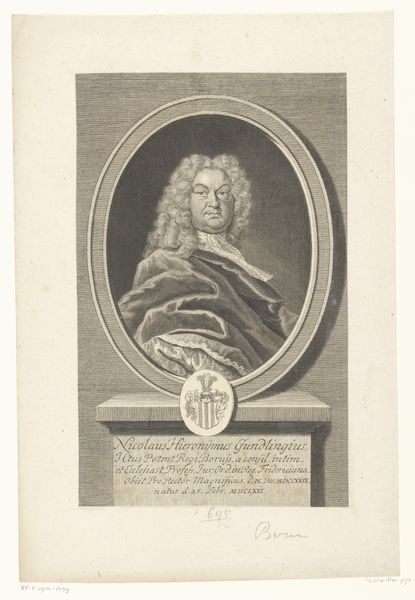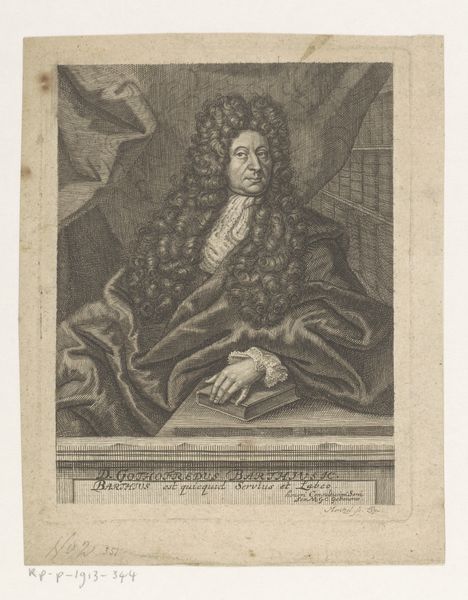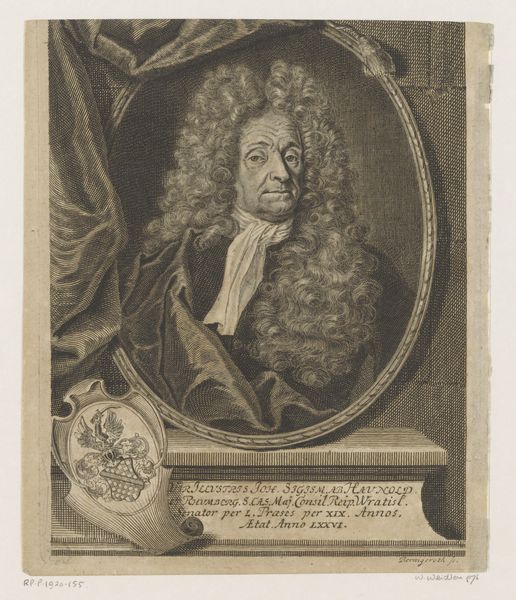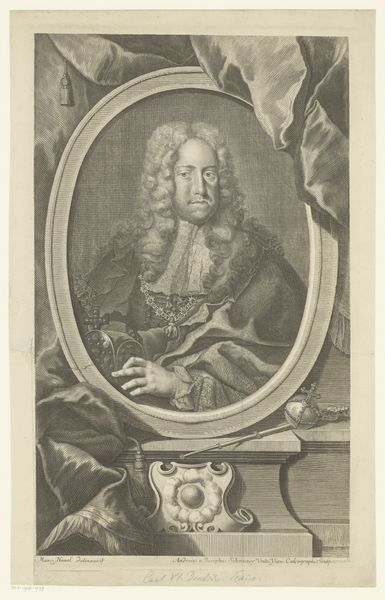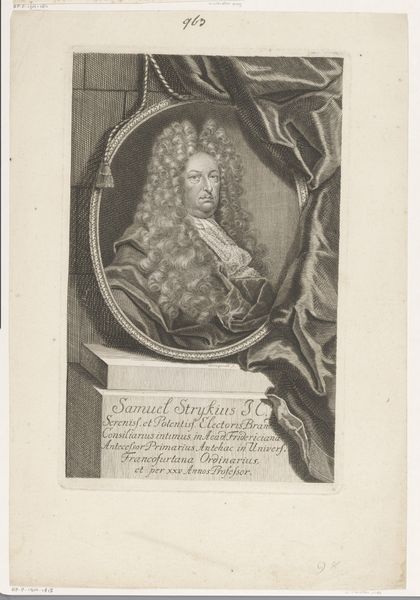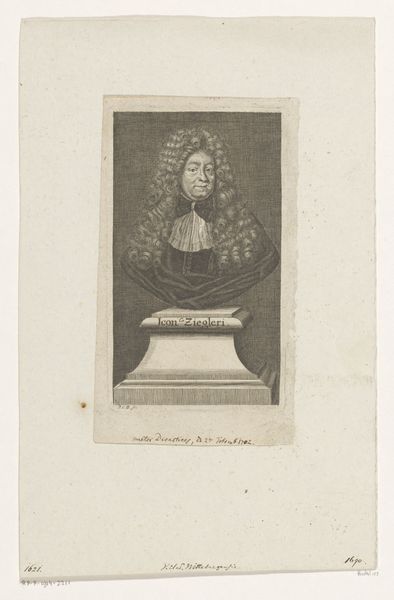
print, engraving
#
portrait
#
baroque
# print
#
old engraving style
#
history-painting
#
engraving
Dimensions: height 170 mm, width 113 mm
Copyright: Rijks Museum: Open Domain
Editor: We’re looking at “Portrait of an Unknown Elderly Man,” an engraving made sometime between 1683 and 1733, attributed to Bernard Picart and now held in the Rijksmuseum. The man's expression is…wary, almost suspicious. The detail is really striking, particularly in the wig! How do you interpret this work, especially given the period it was made in? Curator: Well, looking at this portrait, I'm struck by how it exemplifies the role of portraiture within Baroque society. Notice how the subject is framed – quite literally – within an oval border set against a seemingly stone background. The addition makes this feels staged, more like a public monument than a private likeness. Who do you imagine paid for it, and what image were they keen to project? Editor: Hmm, that's interesting. Given the opulent wig and the imposing frame, maybe the subject was trying to project an image of power and stability? Someone involved in politics or academia, perhaps? Curator: Precisely! In the late 17th and early 18th centuries, printed portraits circulated widely, solidifying reputations and even shaping political alliances. Think about it: What kind of access did the public have to representations of people then? Prints like this had a huge impact on how society was structured and the elite maintained their power. The portrait wasn’t simply about likeness, but about constructing a public persona. Editor: That makes perfect sense. It wasn’t just about remembering someone, but about broadcasting something to the wider world. Curator: Exactly. Considering that this portrait features an *unknown* man underscores this idea of type rather than an individual. And, this portrait likely reflects the period's interest in history-painting themes that served the socio-political narrative of its day. Editor: I see him in a completely new light now! It’s much more than just a picture; it's a historical artifact about public image. Curator: And hopefully encourages a wider, critical way of understanding what portraiture is about!
Comments
No comments
Be the first to comment and join the conversation on the ultimate creative platform.




